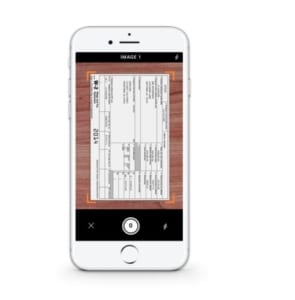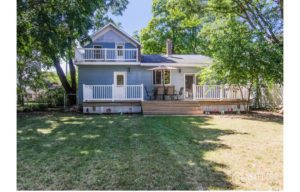Buying a Home with Zero Down
What is a “Zero-Down” Loan?
A zero-down home loan is a no-down-payment mortgage offered by the United States Department of Agriculture (USDA) for eligible rural and suburban home buyers.
You might be thinking, “but I don’t live in a rural area.” That’s OK. While the purpose of the USDA loan program is to boost home ownership in rural areas, the USDA’s definition of “rural” is wide ranging and includes many villages, small towns, suburbs and exurbs of major U.S. cities.
These loans are issued through the USDA Rural Development Guaranteed Housing Loan Program. USDA loans have been available since 2007. They are generally intended for low- or moderate-income borrowers.
 What Are the Benefits of a USDA Loan?
What Are the Benefits of a USDA Loan?
USDA loans offer many benefits over traditional mortgage loans.
- $0 down payment. This is the obvious benefit.
- Competitive interest rates. USDA loans typically offer some of the lowest interest rates on the market. Interest rates on USDA loans are determined by several contributing factors, however the primary factor is your credit profile, as is the case with all mortgage options. Those with higher credit scores often receive the most competitive rates, although borrowers with less than stellar credit may still qualify for a low rate due to the USDA guarantee.
- Low monthly mortgage insurance
- Lenient requirements. USDA loans are designed to provide homebuyers with lenient eligibility requirements that help low-to-moderate income purchasers obtain a home.
USDA Loan Eligibility
At a minimum, USDA loan program guidelines require:
- U.S. citizenship or permanent residency
- Ability to prove creditworthiness, typically with a credit score of at least 640
- Stable and dependable income
- A willingness to repay the mortgage, as indicated by at least 12 months of no late payments or collections
- Adjusted household income is equal to or less than 115% of the area median income. See here for income guidelines.
A credit score of 640 or above usually helps eligible borrowers secure the best rates for a guaranteed USDA loan with zero down payment. Such a score also rewards you with a streamlined or automated application process.
You can still qualify for a USDA loan if your credit score falls below the margin or if you have no credit history at all. However, the interest rates may not be as favorable. In addition, applicants with no traditional credit history may still qualify for these loans. However, you’ll need to show a reliable financial standing through evidence like timely utility or tuition payments.
How Do I Apply?
Applying for a USDA loan is pretty straightforward.
The first step is to choose a USDA lender, such as Michigan Mortgage. We specialize in USDA loans. Once you are working with us, we’ll find out what home you are interested in, where it’s located, your asset and debt situation, and how much you need to borrow. We will conduct a credit check to assess your credit score, just as we do with a traditional mortgage.
Once all that is done, we’ll ask you to provide documentation, including:
- Government-issued ID
- W-2 statements
- Recent pay stubs
- Bank statements
The application process is pretty easy, really. Our loan officers are skilled at making everything go smoothly and helping you navigate the process and get you in your home as soon as possible.
This blog post was written by experts at Mortgage 1 and originally appeared on www.mortgageone.com. Michigan Mortgage is a DBA of Mortgage 1.



 Once the crisis passes, there will be even more buyers and sellers. Some mortgage forecasters are predicting a pent-up demand of buyers flooding the market.
Once the crisis passes, there will be even more buyers and sellers. Some mortgage forecasters are predicting a pent-up demand of buyers flooding the market.
 It is important for you to analyze your spending habits. If you do not have a budget, you should start one now. This will help you understand you spending habits so that the lifestyle that is important to you will be maintainable as a homeowner.
It is important for you to analyze your spending habits. If you do not have a budget, you should start one now. This will help you understand you spending habits so that the lifestyle that is important to you will be maintainable as a homeowner.
 However, for many lenders, that’s not enough to be considered a good mortgage candidate. As a borrower, your DTI is utilized in various situations to determine your level of risk. For instance, if your DTI is too high, opportunities to make a big purchase, such as a mortgage, may be limited.
However, for many lenders, that’s not enough to be considered a good mortgage candidate. As a borrower, your DTI is utilized in various situations to determine your level of risk. For instance, if your DTI is too high, opportunities to make a big purchase, such as a mortgage, may be limited.
 Appraisals are required as past of the home-buying process. Home inspections are not, but they may be one of the most beneficial things you can do for your financial future. A home inspection will ensure that you don’t buy a money pit.
Appraisals are required as past of the home-buying process. Home inspections are not, but they may be one of the most beneficial things you can do for your financial future. A home inspection will ensure that you don’t buy a money pit.
 Conventional loans refer to it as PMI (Private Mortgage Insurance) whereas FHA and Rural Development (RD) refer to it as MIP (mortgage insurance premium). VA does not have it at all but they have a funding fee on most loans that is added to the principal balance. FHA and RD have a similar add on fee that is called upfront mortgage insurance.
Conventional loans refer to it as PMI (Private Mortgage Insurance) whereas FHA and Rural Development (RD) refer to it as MIP (mortgage insurance premium). VA does not have it at all but they have a funding fee on most loans that is added to the principal balance. FHA and RD have a similar add on fee that is called upfront mortgage insurance.
 Online Applications Make a Mortgage Easier
Online Applications Make a Mortgage Easier
 When she was ready, her co-worker and friend, Nakia Cooper, suggested that she get in touch with Loan Officer Dave Lehner and his team at Michigan Mortgage.
When she was ready, her co-worker and friend, Nakia Cooper, suggested that she get in touch with Loan Officer Dave Lehner and his team at Michigan Mortgage.
 Even with the popularity of shorter terms and creative loans, most mortgages are still the tried-and-true 30-year conventional variety. First-time home buyers staring down the gauntlet of 360 payments spread over the next three decades of their life can feel like there is no end in sight. And for those who dare to look at their amortization schedules, that no-end-in-sight feeling can be even greater.
Even with the popularity of shorter terms and creative loans, most mortgages are still the tried-and-true 30-year conventional variety. First-time home buyers staring down the gauntlet of 360 payments spread over the next three decades of their life can feel like there is no end in sight. And for those who dare to look at their amortization schedules, that no-end-in-sight feeling can be even greater.
 “2017 was a good year for us to buy, as we had been working on our credit and finally had the stability in our careers to purchase a home,” Steve said. “We were renting places and getting nothing back in return. We had the money saved up and faith that we could make the commitment.”
“2017 was a good year for us to buy, as we had been working on our credit and finally had the stability in our careers to purchase a home,” Steve said. “We were renting places and getting nothing back in return. We had the money saved up and faith that we could make the commitment.”